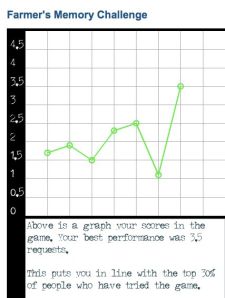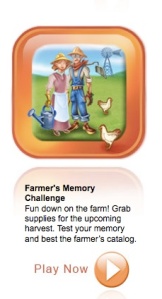Whatever age you are…you’ll love it
George Miller wrote about limitations in memory in 1956. He found that the amount of information which can be remembered on one exposure is between five and nine items, depending on the information.
Applying a range of +2 or -2, the number 7 became known as Miller’s Magic Number, i.e.the number of items (like sounds) which can be held in memory, for the short term, at any one time. Others found this to be true of a number of other tasks, such as lists of words or numbers. We can recall, on average, between 5 and 9 items. However we can increase our capacity to remember where for example, human faces are concerned: hair color, hair style, shape of face, facial hair, etc. serve to increase our capacity as we have embedded the face to be remembered in a network of other things that help our recall. Similarly we can remember phone numbers by forming 2 or more groupings. We don’t really remember “seven” numbers. We remember the first group of three and then the other grouping of four numbers. If it is long distance, then we add an area code. So we actually remember 10 numbers by breaking it into groups of three. I watched a self-styled “nerd” on television memorise at speed a shuffled pack of cards. The reporter who was trying to become a member of MENSA could only manage about 20 after training.
Working memory is “an active memory for the short term. It is something that is held active in the focus of attention for the purpose of being acted upon.” Working memory like any form of attention is selective. The searchlight is switched on and focused!
Importantly, working memory is also inhibitory. The attention component suppresses other networks that can interfere in some way with the object of attention.
You can experience all this in either of the following two exercises: the Posit Science game “The Farmers Memory Challenge” is a very good introduction.
THE DUAL-N-BACK training exercise:
I have been playing around with this exercise (which has been available on the Internet) for quite some time. It has tested my patience sorely, but I keep coming back to it. And I just cannot do it! It has some solid scientific evidence and a very interesting cognitive team behind it. Buschkuehl’s team postulates that the n-back task improves working memory — how many pieces of information subjects can keep in their head — as well as the ability to control the brain’s attention. It needs lots of practice (even for the young).
THE FARMERS MEMORY CHALLENGE
Posit Science has produced a more user-friendly version,” The Farmer’s Memory Challenge” which is a really good introduction to the complexity of the Dual-n-back. After a few trials I found myself improving and rated in the top 30%. (I was still only able to keep track of about 3-4 items in memory). This result was accompanied by the strange remark that statistically I was probably cheating!

Posit science says “This game is a form of what is known as an n-back procedure, a sensitive measure of your ability to keep track of many things at once.
-
The interesting thing about this particular task is that training on it was recently shown to increase fluid intelligence (think IQ).
-
Like many of our abilities, working memory normally declines precipitously with age, beginning early in adulthood and affects our ability to remember simple things like lists, names and the specific details of events in our everyday life. This decline happens regardless of our education or intelligence. Posit Science offers clinically proven training programs that can slow or even reverse this pattern of decline!”
